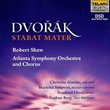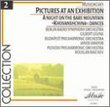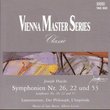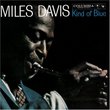| All Artists: Bournemouth Symphony Orchestra Title: Charles Villiers Stanford: Symphony No. 1, Vol. 4 Members Wishing: 0 Total Copies: 0 Label: Naxos Original Release Date: 1/1/2008 Re-Release Date: 11/18/2008 Genre: Classical Styles: Forms & Genres, Concertos, Instruments, Reeds & Winds, Symphonies Number of Discs: 1 SwapaCD Credits: 1 UPC: 747313035670 |
Search - Bournemouth Symphony Orchestra :: Charles Villiers Stanford: Symphony No. 1, Vol. 4
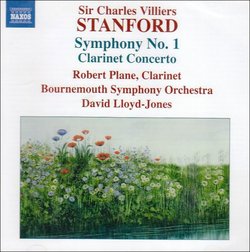 | Bournemouth Symphony Orchestra Charles Villiers Stanford: Symphony No. 1, Vol. 4 Genre: Classical |
Larger Image |
CD DetailsSimilarly Requested CDs
|
CD ReviewsThe Final Instalment in the Naxos Series of Stanford Symphon J Scott Morrison | Middlebury VT, USA | 02/09/2009 (4 out of 5 stars) "This is the fourth and last CD in the Naxos series comprising all seven of Charles Villiers Stanford's symphonies. The others have been reviewed here. Stanford: Symphonies Nos. 4 & 7, Stanford: Symphonies Nos. 2 & 5, Sir Charles Villiers Stanford: Symphonies Nos. 3 "Irish" & 6 "In Honour of G.F. Watts" I wouldn't be surprised if there will be a Naxos box set containing all the symphonies one of these days. My own favorites are the 'Irish' Symphony, and the Nos. 4 & 7. This first symphony was written when Stanford was twenty-four and it was entered in a contest for British symphonies; it won second prize. The first prize winner was a symphony by Francis William Davenport who, as far as I know, was never heard of again. The symphony had one performance a couple of years later and then was never again performed during Stanford's lifetime. It is only in the past twenty years, partly through the efforts of the Chandos label, who have their own complete symphony series with the late Vernon Handley at the helm of the Ulster Orchestra, that the music of Stanford has come more clearly into view. Trailbreaking as those recordings were I believe the more recent Lloyd-Jones/Bournemouth recordings are better, and they are certainly easier on the budget.
The First Symphony (1876) is long -- almost fifty minutes -- and modeled on the symphonies of Beethoven, Schumann, Mendelssohn, and Brahms. It is exquisitely crafted with a clearly discerned form, masterly if somewhat muted orchestration, memorable if not transcendent motivic elements, and an overall satisfactory effect. The first movement is an eighteen-minute giant with fairly tight construction but some moments of lassitude. The second movement, the Scherzo, is a genial ländler that sounds a descendant of Schubert and notable for its suavity. The Andante is vaguely Irish sounding and features a sweet violin solo (played beautifully here by concertmaster Duncan Riddell) toward the end. This feels like a young man's music. The vigorous finale, Allegro molto, is energetic, forward-thrusting and exciting, with marvelous use of massed brass and piquant wind contributions. To be honest, this is not a great symphony, but it is not to be dismissed either. It is certainly the equal of some of Mendelssohn's lesser known symphonies and it is probably the best British symphony of its era. The Clarinet Concerto, here played mellifluously by Robert Plane, is possibly Stanford's most often played orchestral work (or perhaps neck and neck with the 'Irish' Symphony). It has been given beautiful recordings by English clarinet virtuosos Emma Johnson Finzi: Clarinet Concerto; Stanford: Clarinet Concerto and Thea King Finzi/Stanford: Clarinet Concertos. Written some twenty-five years after the First Symphony, one can hear how Stanford's compositional voice has matured. The first movement, Allegro moderato, begins with exuberance but soon expresses pensiveness and melancholy. Its quiet ending leads into the emotional core of the concerto, the exquisite Andante con moto movement, whose main theme is one of Stanford's most memorable. The clarinet soloist sings it with heartbreaking simplicity. The final movement, Allegro moderato, is vigorous, although with a central section of repose, and makes use of Irish dance elements. The whole thing comes to a rousing finish, with the soloist jigging and clogging. This is a wonderful performance the equal of the two aforementioned recordings. Scott Morrison" |

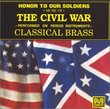


![Franz Lehar: The Land of Smiles / Gustafson, Hadley, Itami, Atkinson; Bonynge [in English]](https://nationalbookswap.com/cd//m/22/6122/6006122.jpg)

